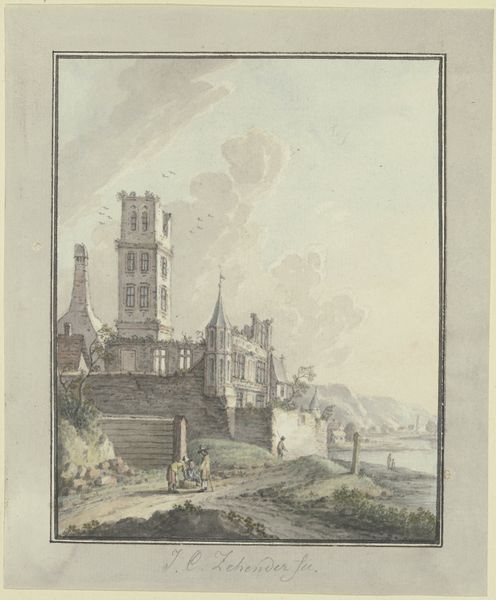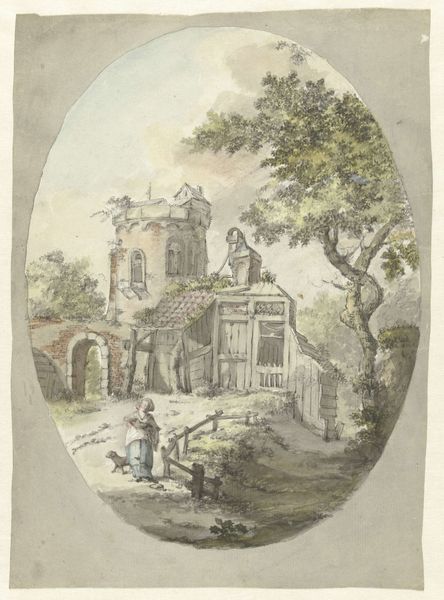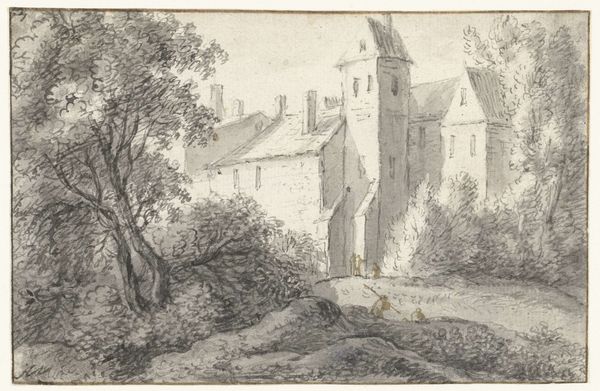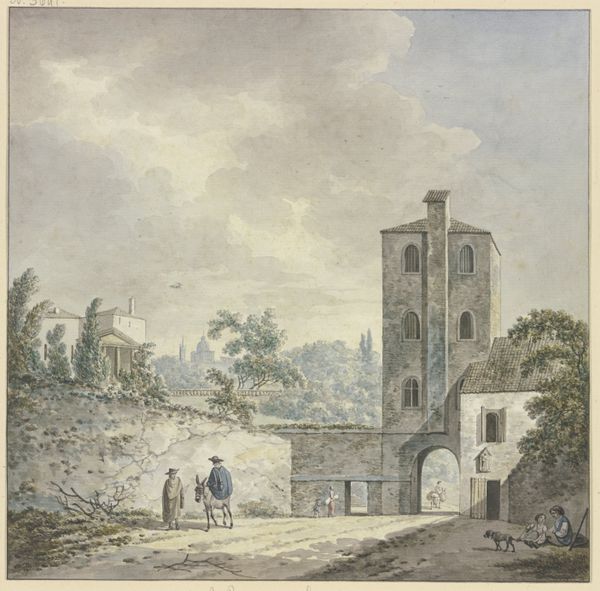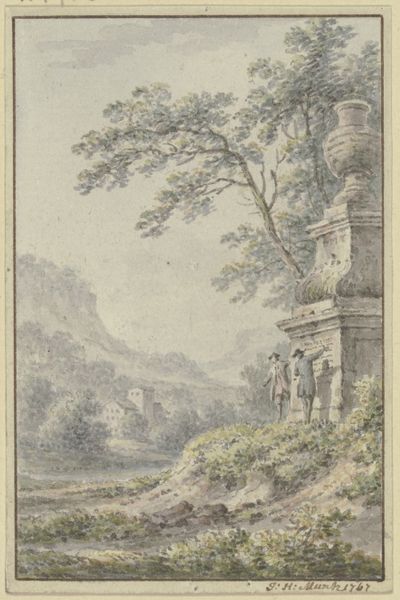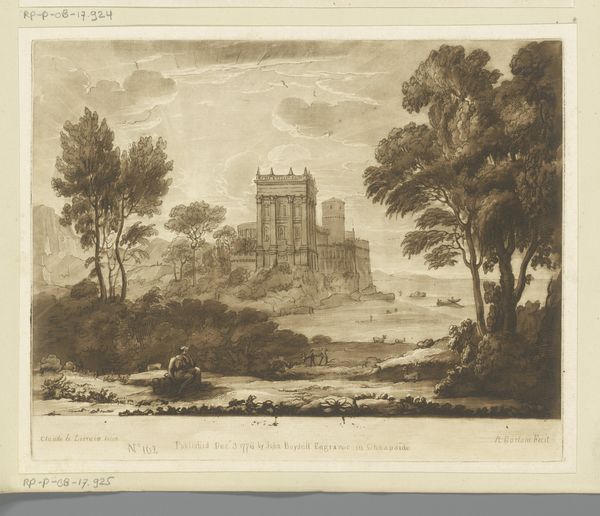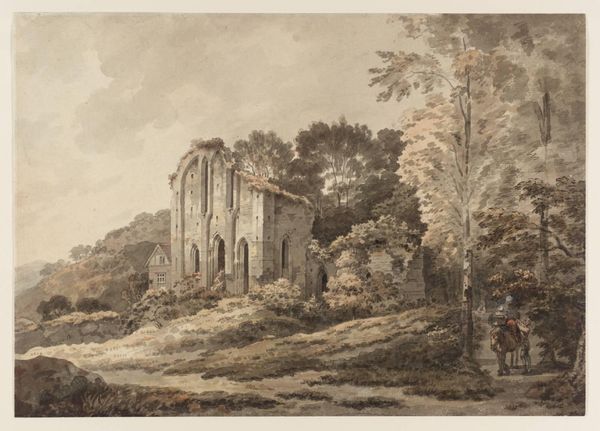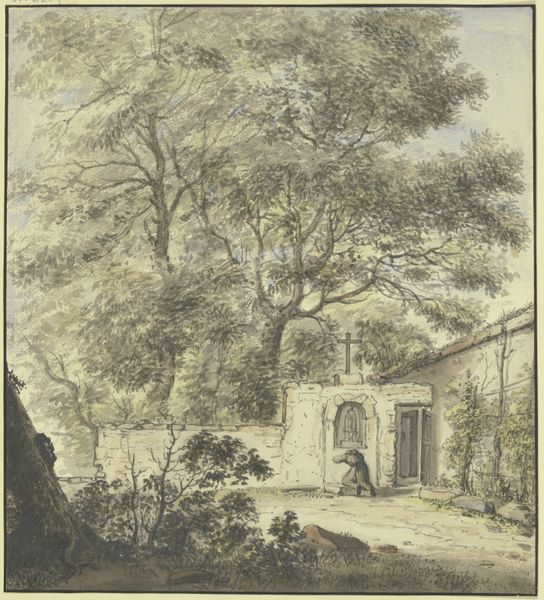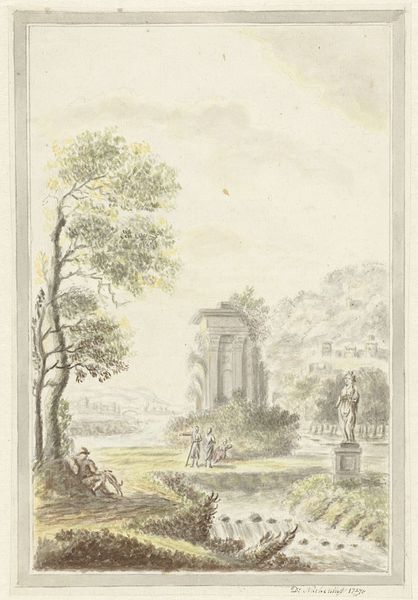
drawing, plein-air, paper, watercolor, architecture
#
drawing
#
plein-air
#
landscape
#
paper
#
watercolor
#
coloured pencil
#
watercolor
#
architecture
Copyright: Public Domain
Curator: Immediately, my eye is drawn to the pale tonality, the subtle gradations of light. It feels quite contemplative. Editor: Indeed. We are looking at a watercolor and pencil drawing titled "Church ruins by the water," created by Johann Caspar Zehender. It's part of our collection here at the Städel Museum. Curator: Ruins are always ripe for symbolism, of course. I can't help but read into the state of the church. The decay invites questions about the relationship between institutions and time, perhaps a comment on shifting societal structures, especially if this was created during a period of significant social upheaval. Editor: It would be interesting to delve into what paper and pigments were accessible at the time, wouldn't it? The relative affordability and the rise of leisure sketching may be related to such pieces' proliferation. These drawings acted almost as records. Curator: Absolutely, but consider also the composition itself. The way the artist has positioned the church on a slight rise, overlooking the water… There's a clear hierarchy, visually. Our eye is drawn upward toward the delicate steeple, a structure in its ruin that attempts to defy gravity itself. It becomes almost an abstract concept as a result. Editor: The labour needed to build such a thing and how its usage as a place for labour, thought, and belief has come and gone is of paramount importance. Perhaps what we should read into isn’t only a shift in society but also an understanding of it. These landscapes capture those notions for the long term. Curator: An interesting proposition. I appreciate the way the artist has rendered the clouds; they almost mirror the ruin, echoing its shape and texture. Do you notice a similar effect with the small groupings of people by the road? A very loose echo of forms can provide such a powerful statement on their connectedness or a complete lack thereof! Editor: Right. Whether this piece acted as a form of direct social critique, through its artistic style, would provide so much context. Such pieces' origins in the labor of watercolor painting can give you so much more insight when contextualized with Zehender's wider production! Curator: A stimulating and thought-provoking consideration! Editor: Indeed, there's always much more to an artwork once placed in a new setting.
Comments
No comments
Be the first to comment and join the conversation on the ultimate creative platform.
